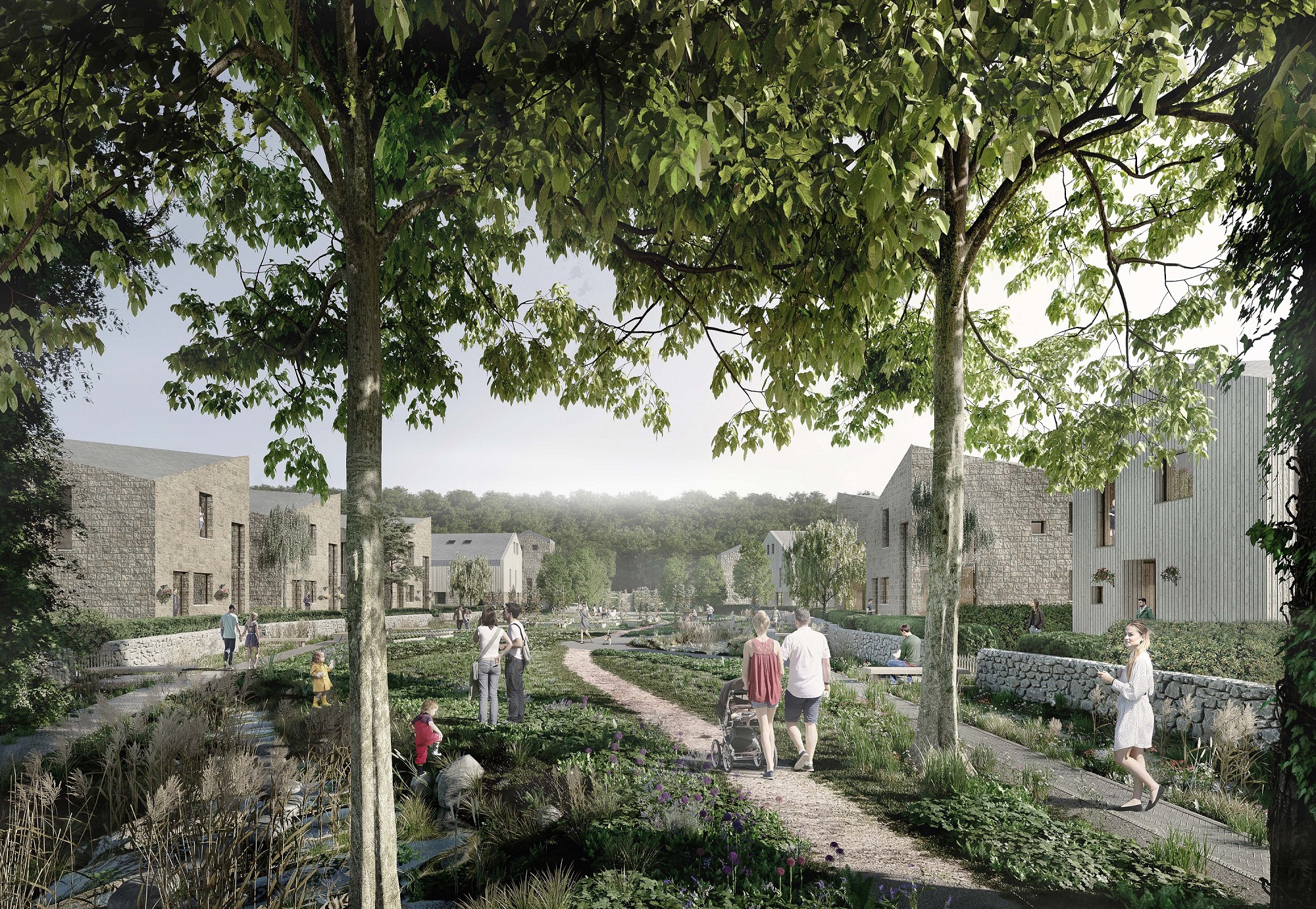Esholt Positive Living
Luke Axe, Strategic Land and Planning Manager for Keyland Developments Limited, describes how a flagship development at Esholt will deliver exceptional sustainability standards in the provision of 150 new homes and approximately 1.08 million sq. ft of work space on the site. Construction work will begin in 2022/23.
What prompted you to aim for high sustainability standards at Esholt?
Keyland Developments, sister company to the site’s former owner Yorkshire Water, believe that they have a responsibility to put this redundant land to positive use and have proposed a bold new vision for the site; to provide an exemplar model for responsible and sustainable development. This development demonstrates how sustainability can drive design and we are looking forward to being able to deliver this ambitious project.
How did you develop this vision?
We worked closely with our sister organisation Yorkshire Water, as well as local community groups to really understand their needs for the site.
To deliver this vision, a framework was developed using the ‘six-capitals’ model of sustainability. The intent is to grow natural, social, human, intellectual, manufactured and financial capital in perpetuity. The framework sets out high sustainability targets for the project and includes key performance indicators that enable progress to be monitored.
It has been challenging but a hugely rewarding experience. Setting aspirational standards means that we had to challenge our supply chain to go beyond business as usual and expand their thinking to explore the possibilities.
How will this development limit carbon emissions?
Towards Net Zero Operational Carbon: The project minimises energy demand by using passive design measures and efficient systems prior to the deployment of low and zero carbon technologies. The project is targeting ≥ 70% reduction of regulated carbon emissions with aspirations to become a zero-carbon development as the proposed adjacent commercial site is delivered.
Towards Net Zero Embodied Carbon: Life cycle assessments will be undertaken during the detailed design stages to inform the selection of materials, reducing lifetime embodied carbon emissions. The project is targeting an embodied carbon footprint of 450 kgCO2/m2 for the homes and 550 kgCO2/m2 for the commercial properties on the site.
How will this project improve climate resilience, good health and well-being?
The project integrates into its landscape setting and provides fantastic access to nature and community spaces. The dwellings are expected to achieve excellent daylight levels and occupant comfort. They have been modelled to TM59 requirements to consider the impacts of future climate to 2080 and inform future mitigation strategies.
What is the impact of this work on the natural ecology of the site?
The scheme embraces its location and seeks to enhance permeability for wildlife, revitalising the surrounding woodland environment. Together, all the measures deployed will provide a net gain to the ecological value of the site. The landscape strategy has been designed to mimic natural drainage through the use of sustainable urban drainage systems (SUDS).
How will a sustainable water cycle be ensured in this development?
The scheme uses a hierarchical approach to reduce per capita water consumption and has a target of 80 litres/person/day for the homes.
What are your future plans?
The intention is to use the thinking and approach developed through Esholt Positive Living as a template for sustainable development across the region. Keyland has significant opportunity to do this across its own sites, but also through working with other private land owners and Local Authorities, to scale up the benefits for Yorkshire and the Humber Region.
What would help others in Yorkshire and Humber to replicate your success?
Improved national and regional standards (which are now coming) and a growing supply chain willing to try a different approach.
Do you have a tip to share?
Set some aspirational targets very early in the process and clearly and consistently share those with the organisations you are working with. Challenge yourself and your professional team how far it is possible to achieve those targets. Failure is not missing the targets, it’s not setting them high enough in the first place.
Note that images on this page are computer generated.






